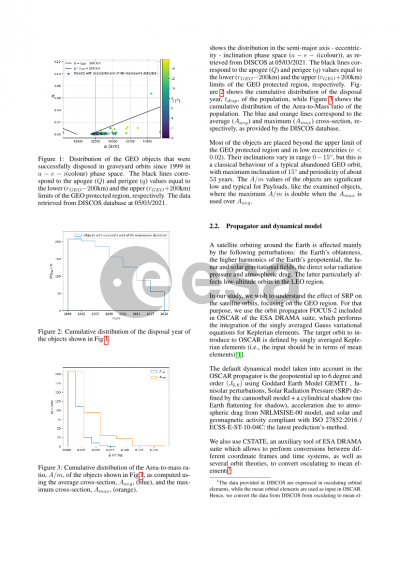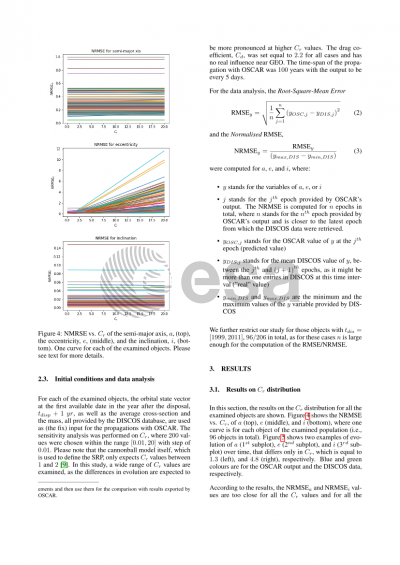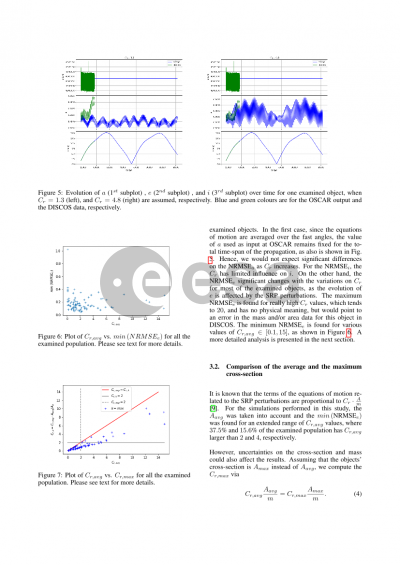Document details

Abstract
The population of the space debris at the circumterrestrial region is continuously increasing and the risk for collision with operational satellites is an open issue, especially in the densely populated sub-regions. The motion of the objects is mainly affected by Earth oblateness, lunisolar perturbations, solar radiation pressure and atmospheric drag. Numerus dynamical studies of the near Earth region, and more detailed studies in specific sub-regions, show the physics of the satellites’ motion, and based thereon the dynamical orbital lifetime can also be roughly estimated. However, for mission design and for collision avoidance studies an accurate orbital lifetime estimation with uncertainty quantification is needed.
The atmospheric drag and solar radiation pressure (SRP) play significant roles mainly in the low Earth orbits region and in higher altitudes, respectively. Both forces depend on the mass and the area of the object, whereas the atmospheric drug also depends on the atmospheric density. The last decade or so, several studies were performed for the estimation of the ballistic coefficient (BC) which leads to temporal drag coefficient estimations, and as a consequence to variations in lifetime estimations.
In this study, we perform a stochastic analysis of the lifetime of the populations of rocket bodies and payloads. Firstly , a Monte Carlo approach can be applied to derive the variability of the orbital lifetime taken into consideration a distribution of ballistic coefficients around the nominal values obtained from ESA DISCOS database. A statistical check is used to assess whether the number of samples is enough for the characterisation of the orbital lifetime. Secondly, we examine different types of distributions in reflectivity coefficient related to the SRP, which affects high-eccentric orbits. Finally, we adapt more detailed atmospheric density models, in order to estimate the BC. The aim of this study is to assess the error in the estimation of the orbital lifetime of these objects, which, among other applications, can be exploited to provide more robust assessment of the compliance to space debris mitigation guidelines.
Preview






